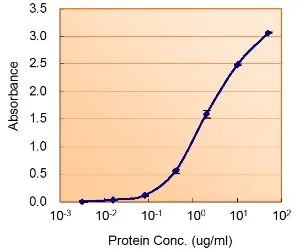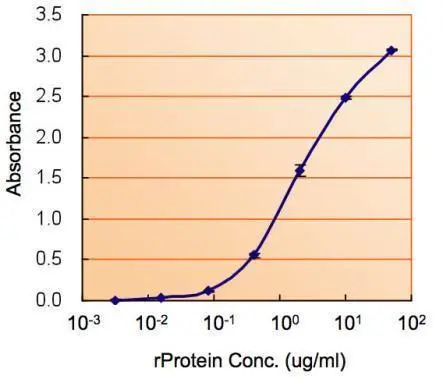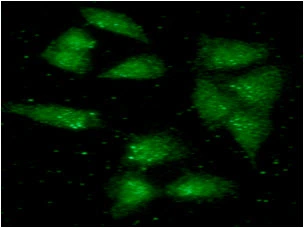
ICC/IF analysis of A549 cells using GTX57696 ALDH2 antibody. Green: Primary antibody Dilution: 1:100
ALDH2 antibody [AT2C10]
GTX57696
ApplicationsImmunoFluorescence, Western Blot, ImmunoCytoChemistry
Product group Antibodies
TargetALDH2
Overview
- SupplierGeneTex
- Product NameALDH2 antibody [AT2C10]
- Delivery Days Customer9
- ApplicationsImmunoFluorescence, Western Blot, ImmunoCytoChemistry
- CertificationResearch Use Only
- ClonalityMonoclonal
- Clone IDAT2C10
- Concentration1 mg/ml
- ConjugateUnconjugated
- Gene ID217
- Target nameALDH2
- Target descriptionaldehyde dehydrogenase 2 family member
- Target synonymsALDH-E2, ALDHI, ALDM, aldehyde dehydrogenase, mitochondrial, ALDH class 2, acetaldehyde dehydrogenase 2, aldehyde dehydrogenase 2 family (mitochondrial), epididymis secretory sperm binding protein, liver mitochondrial ALDH, nucleus-encoded mitochondrial aldehyde dehydrogenase 2
- HostMouse
- IsotypeIgG2a
- Protein IDP05091
- Protein NameAldehyde dehydrogenase, mitochondrial
- Scientific DescriptionThis protein belongs to the aldehyde dehydrogenase family of proteins. Aldehyde dehydrogenase is the second enzyme of the major oxidative pathway of alcohol metabolism. Two major liver isoforms of aldehyde dehydrogenase, cytosolic and mitochondrial, can be distinguished by their electrophoretic mobilities, kinetic properties, and subcellular localizations. Most Caucasians have two major isozymes, while approximately 50% of East Asians have the cytosolic isozyme but not the mitochondrial isozyme. A remarkably higher frequency of acute alcohol intoxication among East Asians than among Caucasians could be related to the absence of a catalytically active form of the mitochondrial isozyme. The increased exposure to acetaldehyde in individuals with the catalytically inactive form may also confer greater susceptibility to many types of cancer. This gene encodes a mitochondrial isoform, which has a low Km for acetaldehydes, and is localized in mitochondrial matrix. Alternative splicing results in multiple transcript variants encoding distinct isoforms.[provided by RefSeq, Nov 2016]
- Storage Instruction-20°C or -80°C,2°C to 8°C
- UNSPSC12352203

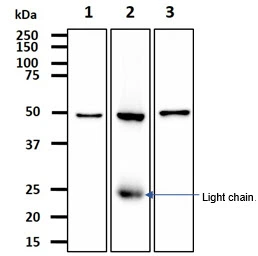
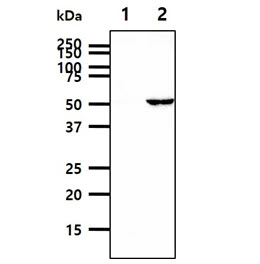

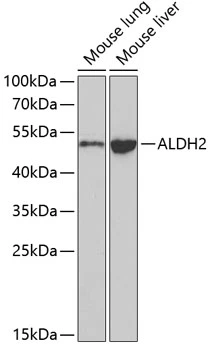
![ELISA analysis of antigen using GTX60727 ALDH2 antibody [4G6A3]. Black : Control antigen 100ng Purple : Antigen 10ng Blue : Antigen 50ng Red : Antigen 100ng](https://www.genetex.com/upload/website/prouct_img/normal/GTX60727/GTX60727_20170912_ELISA_w_23061123_129.webp)
![ICC/IF analysis of COS7 cells transiently transfected with ALDH2 plasmid using GTX84890 ALDH2 antibody [4H2].](https://www.genetex.com/upload/website/prouct_img/normal/GTX84890/GTX84890_1277_ICCIF_w_23061420_726.webp)
